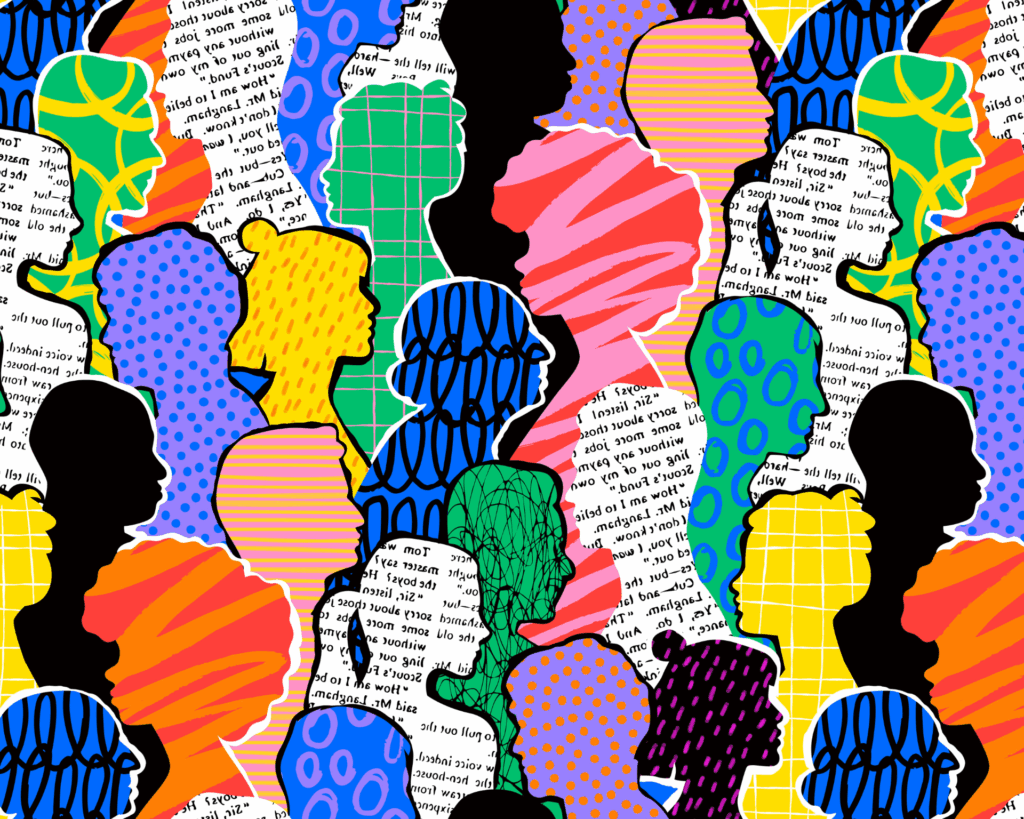Melody S. Goodman
Melody S. Goodman, senior executive vice dean and professor of biostatistics at New York University School of Global Public Health, speaks about her work and the importance of narrative, data-driven storytelling.

Read Time: 5 minutes
Published:
Melody S. Goodman is the senior executive vice dean and professor of biostatistics at New York University School of Global Public Health. She is the founding director of the Center for Antiracism, Social Justice, & Public Health at NYU and the inaugural recipient of the Societal Impact Award from the Caucus for Women in Statistics.
Public health as an industry relies heavily on data science and statistics to properly inform our practice. Professionals in public health know that social factors and structural systems like racism, classism, and sexism all influence individual health. It is essential for public health professionals to study the effects of these systems on the health of the public. But how can we study and quantify such large structures and social dynamics? Even more, how can we use data to tell a story?
Melody S. Goodman is the senior executive vice dean and professor of biostatistics at New York University School of Global Public Health. Goodman recently spoke with Public Health Post about her work in biostatistics and the importance of narrative, data-driven storytelling.
Public Health Post: How would you describe the fields of data science and biostatistics?
Melody Goodman: We’re narrators. We get to tell a story with data. Our computing technology has really improved during my time as a professional. When I think of data science and biostatistics, I often think of data visualization and our ability to have both static images and moving images that people can interact with. Being in this field is part learning from data and part being able to communicate that data really well.
How is biostatistics used to tell a dynamic narrative through data?
People often don’t think of statisticians as storytellers. Particularly in public health, there are some really interesting and compelling stories to tell. For example, when a world-renowned institution doesn’t engage with those in the community around them, particularly in low-income urban areas, that community’s story isn’t shared. I’m definitely a bit of a quant (quantitative methods) geek that loves dealing with numbers, but there’s a conversation that an analyst has with their data. We often then have to collaborate with subject matter experts to point out issues or potential solutions and to tell these important stories that need to be told.
Why is it important to engage with communities in your work in biostatistics?
When you’re trying to quantify things that are not inherently quantifiable, you want to work with people who’ve had those lived experiences. You want to be thoughtful and intentional about the pros and the cons of the real experiences in those communities. In academia, we often explore a topic that we think is scientifically interesting, but maybe it doesn’t have a lot of benefit to people on the ground. Community engagement made me a better scientist so I can work on questions that real humans care about.
What is the importance of using region-specific research methods? Does one size not fit all?
A strategy developed in New York might not work in Boston. We aim to be culturally competent and humble, but then we take an intervention that was developed in one city and pop it in another just because it’s another urban center. And it doesn’t work. Even if you know something is evidence-informed, you may need to adapt it for the region you’re working in.
Institutions should also partner with nearby communities for their mutual benefit. The institution isn’t getting what they need unless the community also gets some of what they need. Large academic and medical centers with lots of different knowledge could be a resource to a community if they’re educated on how to access it. When you work in your local communities, you can start to invite people into your institution to help break down some of those barriers.
How does biostatistics quantify the health effects of large systems?
This field often tries to quantify things that aren’t easily quantifiable like the effects of racism on health. Qualitative research looks at the “why” of science through open-ended work that isn’t necessarily overtly number based. As a researcher, good numbers and quantitative data may tell a compelling story that even a strong anecdotal qualitative piece couldn’t. It was important for me to be a quantitative person who worked in spaces where great qualitative work was happening; I could bring a different perspective. I really value qualitative work, but our scientific field just has this bias where we think quantitative work is more rigorous. I like this niche of work where qualitative and quantitative methods are married.
What do you hope to see in the future of biostatistics in public health?
Our field is not very diverse. We need to figure out how to create additional pathways so that students from different backgrounds can find careers in biostatistics and data science in public health. There’s this idea that only certain types of people become biostatisticians. But I never had a Black professor in school, so I didn’t think being a professor was even an option for me. We need people from different academic and personal backgrounds to inform our research. Biostatisticians are narrators, and there’s a lot of different public health stories to be told. We’re only telling a small portion of them. The more diverse the field, the more stories we’ll tell.
Dr. Goodman spoke more about her work at Boston University School of Public Health’s Public Health Conversation on Public Health Data Science: The Next Decade on February 29. Revisit the conversation here.
This interview has been edited for length and clarity. Photo provided



